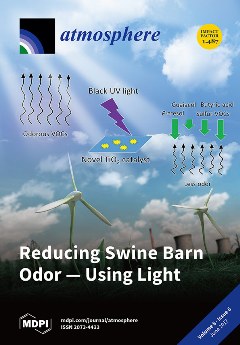
PURETi Reduces Odors in Animal Farming
Abstract
Concentrated livestock feeding operations have become a source of odorous gas emissions that impact air quality. Comprehensive and practical technologies are needed for a sustainable mitigation of the emissions. In this study, we advance the concept of using a catalyst for barn walls and ceilings for odor mitigation. Two catalysts, a new TiO2-based catalyst, PureTi Clean, and a conventional Evonik (formerly Degussa, Evonik Industries, Essen, Germany) P25 (average particle size 25 nm) catalyst, were studied for use in reducing simulated odorous volatile organic compound (VOC) emissions on a laboratory scale. The UV source was black light. Dimethyl disulfide (DMDS), diethyl disulfide (DEDS), dimethyl trisulfide (DMTS), butyric acid, p-cresol, and guaiacol were selected as model odorants. The effects of the environmental parameters, the presence of swine dust covering the catalyst, the catalyst type and layer density, and the treatment time were tested. The performance of the PureTi catalyst at 10 µg/cm2 was comparable to that of P25 at 250 µg/cm2. The odorant reduction ranged from 100.0 ± 0.0% to 40.4 ± 24.8% at a treatment time of 200 s, simulating wintertime barn ventilation. At a treatment time of 40 s (simulating summertime barn ventilation), the reductions were lower (from 27.4 ± 8.3% to 62.2 ± 7.5%). The swine dust layer on the catalyst surface blocked 15.06 ± 5.30% of UV365 and did not have a significant impact (p > 0.23) on the catalyst performance. Significant effects of relative humidity and temperature were observed. View Full-Text
Zhu, W.; Koziel, J.A.; Maurer, D.L. Mitigation of Livestock Odors Using Black Light and a New Titanium Dioxide-Based Catalyst: Proof-of-Concept. Atmosphere 2017, 8, 103.
